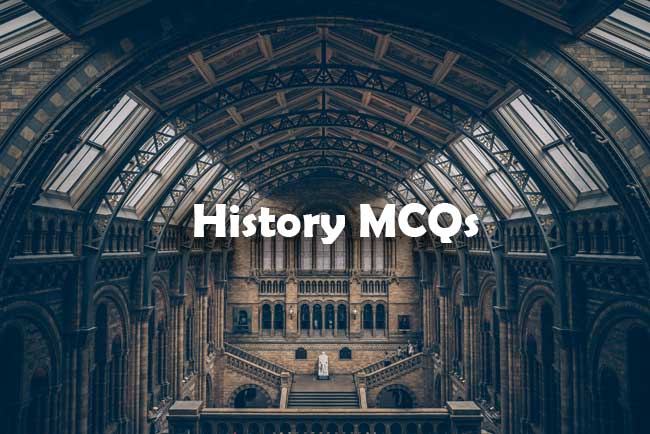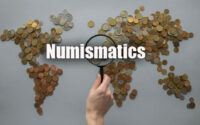RRB NTPC History Questions
Find the direct download link for RRB NTPC History Questions paper pdf in the section below. Aspirants who are looking for RRB NTPC History General Knowledge Papers can find in the table below. Are you searching for the Railway Recruitment Board History Sample Papers for starting exam preparation?

Don’t worry. We attached the free downloading links of Railway Recruitment Board History General Knowledge Old Papers. By referring the Last 5 years Railway Recruitment Board History Previous Question Papers, candidates can analyse the exam pattern.
RRB NTPC History Questions Papers will help you to get a good score in the exam. By clicking on the below-enclosed links, you can download the RRB NTPC History Questions Papers with solutions in the form of Pdf.
History Questions for RRB NTPC Exam
1. Which of the following is not the name of an early medieval guild ?
(A) Aihole
(B) Vira Valanjiyar
(C) Manigramam
(D) Keralolpatyam
2. The ‘Zafarnama’ is a work that describes :
(A) The exploits of Timur
(B) The attacks of Mahmud of Ghazni
(C) The shifting of the capital to Daulatabad
(D) The victory of the Battle of Terain
3. Who were the Taziks ?
(A) Non-Turk foreign Amirs
(B) Indian Muslims
(C) Khans
(D) Maliks
4. ‘Vishistadvaitavada’ is the philosophical belief system of :
(A) Virasaivism
(B) The Nayanars
(C) The Alvars
(D) Kashmir Saivism
5. Which one of the following is correctly matched ?
(A) Nimbarkacharya — Skandhi Sampradaya
(B) Dadu — Bijak
(C) Shankardev — Nirgun Bhakti
(D) Agama — Buddhism
6. Which of the following European travellers came to India in the 15th Century ?
(A) Duarte Barbosa
(B) Ludovico Varthema
(C) Nicolo Conti
(D) Domingo Paes
7. Chand Minar at Daulatabad was built by :
(A) Malik Kafur
(B) Khusro Khan
(C) Muhammad bin Tughluq
(D) Alauddin Hasan Bahman Shah
8. Sultan Bahman Shah established his capital at :
(A) Gulbarga
(B) Bidar
(C) Berar
(D) Bijapur
9. The ratio between military and civil population for determining the population of the Deccan region adopted by the historian Moreland was :
(A) 1 : 20
(B) 1 : 30
(C) 1 : 35
(D) 1 : 40
10. In which book is information given about the Maratha Sardars forcing an army of 60,000 horsemen against the Mughal army in Khandesh in 1702 ?
(A) Nuskha-i-Dilkusha
(B) Maasir-i-Alamgiri
(C) Muntakhab-ul-Lubab
(D) Maasir-ul-Umara
11. The Masnavi form of poetry was much used in India by :
(A) Afif
(B) Amir Khusrau
(C) Ferishta
(D) Ghulam Hussain Beg
12. The ‘bulbous dome’ became the characteristic feature of architecture under :
(A) Babur
(B) Humayun
(C) Akbar
(D) Shah Jahan
13. San Thomé, near Madras was captured in 1672 by :
(A) The French
(B) The Mughals
(C) The Marathas
(D) Dutch
14. Which one of the following was not a major centre of textile production ?
(A) Kanchipuram
(B) Madurai
(C) Narsapur
(D) Adoni
15. Which of the following is the earliest text on statecraft written in the Deccan ?
(A) Manasollasa
(B) Amuktamalyada
(C) Adnyapatra
(D) Maduraitala Varalauru
16. The treaty of Allahabad was concluded in 1765 between English and Nawab :
(A) Shuja-ud-daula
(B) Ali Vardi Khan
(C) Siraj-ud-daula
(D) Shuja-ud-din
17. The first Anglo-Mysore war took place during the period of :
(A) Clive
(B) Verelst
(C) Cartier
(D) Warren Hastings
18. Who was responsible for the establishment of the college of Fort William at Calcutta to train young civil servants of India ?
(A) Cornwallis
(B) William Bentinck
(C) Wellesley
(D) Dalhousie
19. “In spite of the final failure, Dupleix is a striking and brilliant figure of Indian History.” Who wrote it ?
(A) H.H. Dodwell
(B) Alfred Lyall
(C) P.E. Roberts
(D) G.B. Malleson
20. By which Act the Governor General of India was appointed ?
(A) Act of 1733
(B) Act of 1784
(C) Charter Act of 1813
(D) Charter Act of 1833
|
More History Questions for Preparation
|
|
| UPSC | TNPSC |
| GPSC | WBCS |
| NDA | SSC CHSL |
| DSSB | SSC CGL |
| AFCAT | MTS |
| RRB NTPC | MPSC |
| MPPSC | CDS |
| BPSC | |
21. Who among the following Governor- Generals created the covenanted civil service of India which came to be known as the Indian civil service from 1861 onwards ?
(A) William Bentinck
(B) Wellesley
(C) Cornwallis
(D) Warren Hastings
22. The partition of Bengal was revoked by the British Government during the period of :
(A) Baron Hardinge
(B) Baron Chelmsford
(C) Earl of Minto II
(D) Earl of Reading
23. Who was the secretary of state for India at the time of the foundation of Indian National Congress ?
(A) Lord Morley
(B) Lord Elgin
(C) Lord Hamilton
(D) Lord Cross
24. In 1918, the Madras Labour Union was organised by …………………. .
(A) Motilal Nehru
(B) B.P. Wadia
(C) N.M. Lokhande
(D) M.K. Bose
25. Victoria Memorial Hall was constructed in 1921 at :
(A) Calcutta
(B) Bombay
(C) Madras
(D) Delhi
26. Who among the following attended the second session of the Round Table Conference of 1931 ?
(A) Vijayalakshmi Pandit
(B) Sucheta Kripalani
(C) Sarojini Naidu
(D) Annie Besant
27. Who among the following were the members of the Cabinet Mission which came to India in March 1946 ?
(A) A.V. Alexander, Lord Mountbatten, Lord Attlee
(B) Lord Pathick Lawrence, Sir Stafford Cripps, Lord Attlee
(C) Lord Attlee, A.V. Alexander, Sir Stafford Cripps
(D) A.V. Alexander, Lord Pathick Lawrence, Sir Stafford Cripps
28. Which Articles of the Indian Constitution Guarantee the complete equality of men and women ?
(A) Articles 12 and 13
(B) Articles 14 and 15
(C) Articles 16 and 17
(D) Articles 21 and 22
29. “A Vindication of the Rights of Women” was written by Mary Wollstonecraft in :
(A) 1789
(B) 1790
(C) 1791
(D) 1792
30. ‘The Subaltern school’ interpretation of Indian Nationalism is not shared by :
(A) Gyan Pandey
(B) Bipan Chandra
(C) Shahid Amin
(D) David Hardiman
31. “Every culture is in itself complete.” Who said it ?
(A) Spencer
(B) Toynbee
(C) Ranke
(D) Collingwood
32. Walter Lippmann, who has popularised the term ‘Cold war’ was a journalist of :
(A) America
(B) Russia
(C) France
(D) Britain
33. “The Marshall Plan” was related to :
(A) Economic aid to Europe
(B) Reconstruction of Asia after colonialism
(C) American entry into Latin America
(D) USA’s influence in Africa
34. ‘Corporate State’ was established in the 20th century under the regime of :
(A) Gen. Franco
(B) Mussolini
(C) Hitler
(D) Stalin
35. Which of the following is not an Archaeologist from Maharashtra ?
(A) H.D. Sankhalia
(B) K. Padayya
(C) M.K. Dhavalikar
(D) B.B. Lal
36. ‘Jhukar Culture’ is found at :
(A) Kalibangan
(B) Chanhu-daro
(C) Banwali
(D) Ropar
37. Megalithic sites in Maharashtra are concentrated in :
(A) Dhulia District
(B) Jalgaon District
(C) Nagpur District
(D) Aurangabad District
38. Which hymn of Rigveda gives an idea of the educational system ?
(A) Nasadiya hymn
(B) Purusha hymn
(C) Manduka hymn
(D) Ganstuti hymn
39. Rigvedic bhishaj was a :
(A) Carpenter
(B) Ironsmith
(C) Physician
(D) Goldsmith
40. Rigveda does not mention the river which lies to the west of the Indus :
(A) Kabul
(B) Gomal
(C) Swat
(D) Taigris
| Ancient India | Modern India |
| Medieval India | World History |
41. The following mountain peaks were referred to as the source of soma by Rigvedic composers ?
(A) Silament
(B) Saptapuda
(C) Mujavant
(D) Shivalaya
42. Gatha-Saptashati is a collection of Prakrit poems dealing with :
(A) Love lores
(B) Worship rituals
(C) Astrology
(D) Geneology
43. ‘Mahashilakantaka’ was the name of a :
(A) Person
(B) Title
(C) Weapon
(D) The Monument
44. The Sarvastivada sect originated at :
(A) Vaishali
(B) Mathura
(C) Pataliputra
(D) Takshashila
45. Sixteen Mahajanpadas are mentioned in :
(A) Dighnikaya
(B) Dipvansha
(C) Anguttarnikaya
(D) Buddhacharitam
46. Which of the following Jaina texts were compiled at the first Jaina Council held at Pataliputra ?
(A) 12 Angas
(B) 14 Purvas
(C) 6 Chheda Sutras
(D) 10 Prakirnas
47. Who has stated that Chandragupta Maurya as young man had met Alexander face to face in Punjab ?
(A) Plutarch
(B) Justin
(C) Megasthenes
(D) Arrian
48. Ashoka refers to the importance of medical herbs, roots and fruits for the treatment of human beings and animals in :
(A) Pillar Edict II
(B) Kalinga Edict
(C) Rock Edict
(D) Bhabru Edict
49. The ‘tinai’ mentioned in the Sangam literature correspond to :
(A) Political territories in the South
(B) Economic transactions with other regions
(C) Ecological zones in the South
(D) Social hierarchy in the South
50. Paloura, mentioned as a port in the early sources, was located on the coast of :
(A) Kerala
(B) Vanga
(C) Kalinga
(D) Andhra


